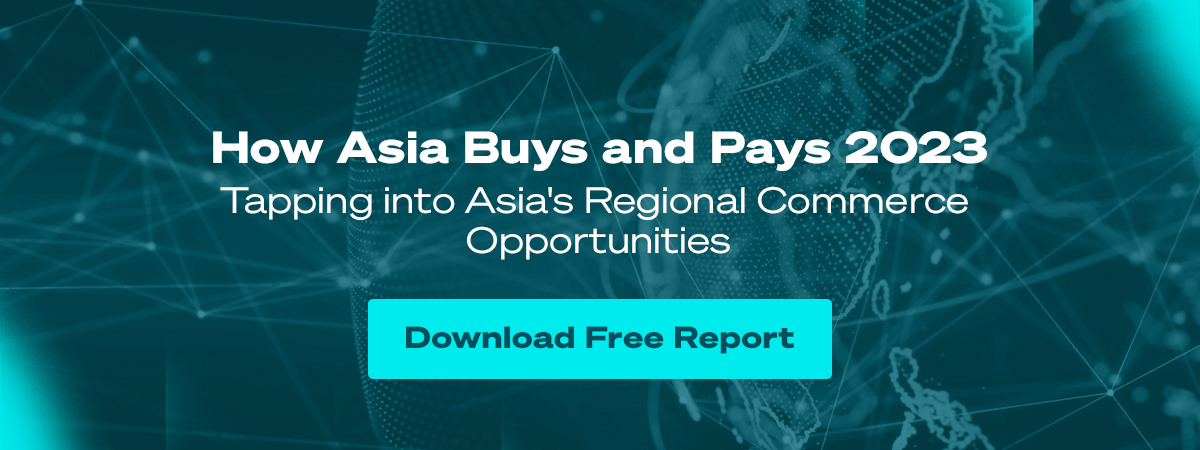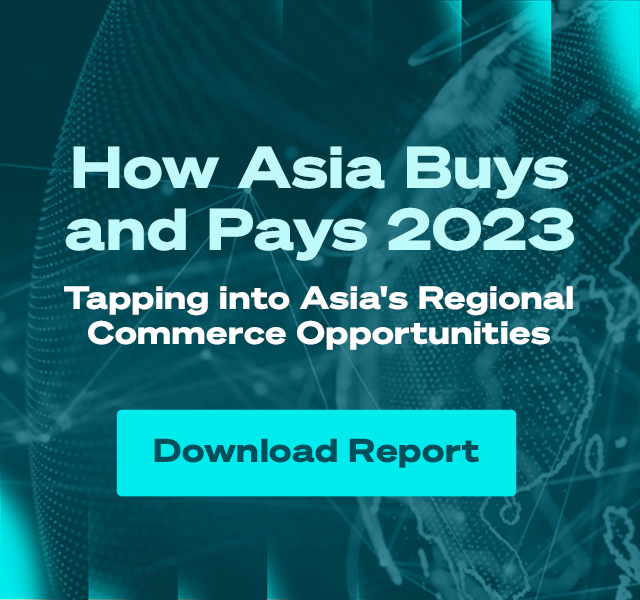
Payments Powerhouses: Driving Digital Payments in Southeast Asia
Chris Yeo is the Managing Director and Head of GrabPay and GrabRewards at Grab Financial Group.
In this instalment of Payments Powerhouses, he shares insights about Grab's transformation into a key player in Southeast Asia's payments landscape, as well as major trends like Buy Now Pay Later (BNPL) that are shaping the evolution of digital payments in the region.
Hello Chris! Let’s start by telling us your journey into the world of fintech and what your current role is.
Chris Yeo: I’ve always been keen on how payments power commerce. My FinTech career started in PayPal, where I oversaw its APAC strategy. I currently head up GrabPay and GrabRewards at Grab Financial Group (GFG). We aim to make our innovative payment solutions - GrabPay and PayLater - accepted by as many merchants as possible, both online and offline. This will give Southeast Asian consumers more flexible and rewarding ways to pay.
Buy Now, Pay Later (BNPL) has gained so much traction recently, and we see that Grab is one of the key players. What do you think drove this surge of interest in BNPL?
BNPL offers many benefits to consumers and merchants. Nine in 10 Southeast Asians don’t have credit cards, so the ability to make interest-free instalments is attractive. Many of our PayLater merchant-partners have also reported larger basket sizes and higher conversion rates since offering PayLater to their consumers.
Apart from having zero interest charged for the most part - what makes BNPL different from traditional instalment payment plans?
PayLater by Grab provides a customised loan quantum for each user based on their Grab user profile - we leverage data such as their past transaction history as well as quantum and frequency of transactions. With this data, we can determine their creditworthiness and how much to loan them. This ensures that PayLater consumers can only borrow what they can repay. Other PayLater guardrails include in-app notifications and the halting of further transactions on the Grab app when a payment is missed.
How has BNPL impacted the payment landscape of Southeast Asia?
Given its fast-growing popularity, BNPL is here to stay. Many BNPL players have entered the Southeast Asian markets, and it’s currently a red ocean of competition, though we expect greater consolidation over time. To succeed, market players must deliver the most outstanding consumer and merchant value.
What sets BNPL players apart? For PayLater by Grab, we have the scale of Grab’s ecosystem with over 25M monthly transacting users and a rich set of proprietary transactional data. This data enables us to assess which consumers should be offered BNPL and what their spending limit should be. This strict whitelisting approach is unlike most other market players who rely on existing credit card approvals from their customers’ issuing banks and is critical in Southeast Asia where credit card ownership is low. PayLater enables us to offer BNPL responsibly to the financially underserved and lowers barriers to entry for affordable and appropriate instalment products. In turn, we can fulfil our mission of driving financial inclusion across the region.
What other key trends do you foresee for Southeast Asia’s payment landscape in the next 5-10 years?
First, more mobile-first consumers will continue to take up new payment options such as digital wallets and BNPL. We are just scratching the surface in terms of growth. This is in light of Southeast Asia’s massive population of over 680 million people, comprising a sizable middle-income segment and emerging young consumers. On top of that, smartphone penetration is high in the region, making such digital payment options more accessible and convenient.
Second, there will be a proliferation of new digital wallets and payment methods to meet consumer demand.
Finally, ready government support will continue to drive FinTech adoption across the region. An interoperable QR code is a key infrastructural component to drive cashless payments and lay the foundation for nationwide digital payment adoption. Many Southeast Asian countries have implemented this, such as QRIS in Indonesia, SGQR in Singapore, and DuitNow QR in Malaysia. At GFG, we drive cashless adoption by leveraging each country’s real-time payments rails such as PayNow in Singapore and InstaPay in the Philippines to move money from bank accounts to GrabPay wallet accounts.
Southeast Asia is a melting pot of cultures and languages. What has Grab’s approach been as it expanded regionally?
In a region as diverse as Southeast Asia, our partnership mindset is a crucial competitive advantage - it allows us to make the biggest impact and drive growth in the shortest time. We partner with many payment players (such as 2C2P) to enable GrabPay as a payment method outside of Grab’s in-app services. Our local partners are highly complementary to GrabPay and our financial services in each country. For example, our Maybank partnership in Malaysia decreases our cost when our customers top up their GrabPay wallets using their Maybank account. In turn, the Maybank-Grab allows Maybank to reach more cardholders.
We adopt a similar partnership mindset with regulators as we believe this is vital to our success in Southeast Asia. To this end, we have worked with Malaysian and Indonesian regulators to distribute COVID-19 financial aid to millions of their citizens and advance their cashless agenda. We have also partnered with the Bank of Thailand to roll out financial literacy programmes to our driver-partners.
An advantage we have is the significant number of licences to operate financial services across Southeast Asia. At present, we hold payment licences in six core markets and insurance and lending licences in five. We were also selected to set up a digital bank in Singapore.
It’s interesting to see how Grab evolved from a simple ride-hailing app into a super app. What factors propelled Grab’s transformation?
Grab was founded to solve a transportation safety issue. As we were coming up with solutions for this, we discovered that many Southeast Asians lacked access to financial services. This meant that we had to open bank accounts for many of our driver-partners so they could receive their earnings. We also helped them apply for insurance. Six in 10 Southeast Asians are underbanked or unbanked; nine in 10 don’t have access to credit cards. This realisation led to the creation of Grab Financial Group in 2018.
Since then, we’ve been laser-focused on our mission to drive financial inclusion across the region by offering simple, flexible and transparent financial products across digital payments, insurance, lending, and wealth management.
How has Grab’s transformation into a super app disrupted the regional fintech/payments scene?
We’ve been able to serve the underbanked and unbanked in Southeast Asia by offering ‘micro’ financial services that are embedded into everyday services on the Grab app. This has opened up access to financial services to millions who are ‘invisible’ in the traditional financial system, including small businesses who can’t access working capital and gig workers who can’t afford annual insurance premiums and have difficulty getting loans from traditional financial institutions. We will continue to offer innovative financial solutions to drive financial inclusion across Southeast Asia.
. . .
Payments Powerhouses is a monthly editorial series interviewing the movers and shakers of the payments and wider fintech industry in Southeast Asia and beyond. If you’d like to be featured on Payments Powerhouses, reach out to us here.

